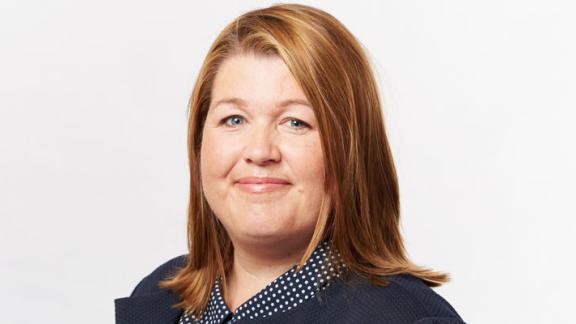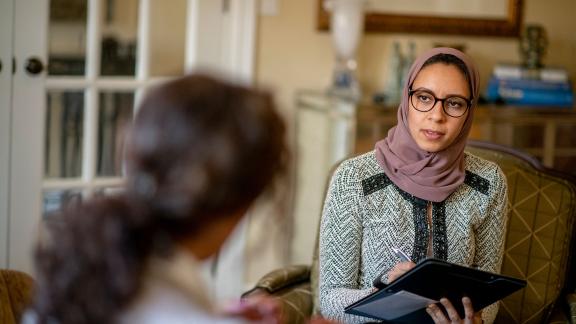The time is now

In 2017, the Health and Care Women Leaders Network published the report NHS Women on Boards 50:50 by 2020, which called for 500 more women on executive boards by 2020. On the launch of the follow-up report, deputy chair of the network, Yvonne Ormston, shares her thoughts on the progress that has been made over the last three years, and reflects on how the findings apply to the LGBTQ+ workforce.
While there has been a 5 per cent improvement in women’s representation on boards since the 50:50 by 2020 report in 2017, 150 more women are still required in board positions to reach the goal of gender balance.
Chair of the Health and Care Women Leaders Network, Sam Allen, makes the point that the network is committed to driving the increase and that it is increasingly looking at intersectionality. The absence of a national data set that tracks each of the protected characteristics of NHS boards continues to hamper efforts to determine what real progress we are making at the highest leadership levels to reflect diversity.
The latest report from the network, Action for Equality, The Time is Now, acknowledges the importance of intersectionality with particular reference to race, which is timely given the way the current COVID-19 pandemic has cruelly exposed the inequalities in society many of us have been trying for years to address.
Intersectional LGBTQ+ perspective
What is not apparent are the intersectional experiences of women from LGBTQ+ backgrounds. It’s been 30 years since Kimberlé Crenshaw coined the term ‘intersectionality’ to describe how discrimination against different facets of a person’s identity can overlap and impact their lives. There's no such thing as having one identity or of there being one essential identity that fundamentally defines who we actually are. (Cornel West, 1992). What is clear from the evidence, however, is that certain individuals face compounded discrimination in relation to the multiple and overlapping identities they hold.
As a member of the guiding group which has recently launched the Health and Care LGBTQ+ Leaders Network, it caused me to reflect what this could mean for LGBTQ+ staff and the implications for leadership representation. Many of the recommendations for achieving greater numbers of women on boards could equally apply to achieving more LGBTQ+ people on boards. These include:
- diversity data being used as a driver for reform, reinforced with accountability through CQC processes and evidence that it is a regular focus of boards
- board commitment to diversity and inclusion and being able to demonstrate cultural competence
- moving away from stereotypical assumptions of leadership to embrace more inclusive, compassionate, and collaborative styles
- ensuring robust infrastructure to actively support talent management at all levels that secure the future diversity of leadership.
The report is extremely rich in reflecting the experiences of current and aspirant directors. From an intersectional LGBTQ+ perspective, as with other protected characteristics, it’s difficult to determine the current position on board representation, the particular issues colleagues might face, recognition of these issues and any specific actions that could be identified.
Sexual orientation
When we are improving data collection, we need to ensure sexual orientation is included and that gender tracking extends beyond binary. Hearing the voices of trans women and the specific barriers they face in accessing board positions would give us a valuable additional lens. The report produced for the NHS Leadership Academy, Inclusion: The DNA of Leadership and Change, suggests that the NHS needs to: ‘do much more active listening across sectors of its workforce in order to enhance opportunities for collaborative learning and the active engagement of individuals from marginalised groups in developing innovative solutions to service improvement.’
It strikes me that we cannot push forward for greater representation for women on boards at the cost of achieving broader diversity; we need to pay as much attention to intersectionality and the very differing needs of all our protected characteristic groups. It would be difficult to do this comprehensively in any one report and so a complimentary report on the needs of LGBTQ+ staff would inform how we can achieve that real breadth in diversity at board, senior and mid leadership levels, which would in turn ensure our organisations are more responsive to the needs of the populations we serve.
Bullying and harassment
While we have seen much improvement within the NHS in the experience of LGBTQ+ staff, there is still a long way to go. I continue to hear, almost daily, very difficult stories where staff have not felt able to bring their whole selves to work and the micro-aggressions that they suffer. It upsets me greatly to hear from trans leader colleagues of the daily struggles they experience to have their voices heard and the abuse they suffer for doing so. This is not what I recognise as a caring, compassionate and inclusive approach to leadership in the NHS.
Stonewall’s 2016 guide for the NHS on sexual orientation stated that many LGBTQ+ NHS employees: ‘continue to be bullied and harassed by their colleagues or managers, simply for being gay. From ‘jokes’ and ‘banter’ to being excluded from team activities or outed to colleagues, anti-gay bullying and harassment severely affects employees’ wellbeing, as well as their ability to do their job effectively.’
Successive NHS Staff Surveys continue to evidence that LGBTQ+ staff have a poorer work experience than their heterosexual colleagues, enduring unacceptable stigma and discrimination.
LGBTQ+ people on boards
In June 2020, the NHS Confederation launched the new network for LGBTQ+ leaders and allies as a platform for the LGBTQ+ community to listen, share and engage with peers and wider stakeholders, in order to:
• increase the numbers and visibility of LGBTQ+ people on boards and in senior leadership to influence change across the system
• improve the experience of LGBTQ+ staff so they can work in an inclusive and supportive environment where they can thrive
• improve the experience of LGBTQ+ patients and ensure that they receive the best care.
Layla McCay commented in her blog on the launch of the network that: ‘as a young lesbian in the NHS, seeing LGBTQ+ people on boards and in senior leadership positions, and interacting with LGBTQ+ peers, would have been transformative.’
Let’s try to ensure that for generations to come, we can expedite that transformation.
Yvonne Ormston MBE is chief executive of Gateshead Health NHS Foundation Trust.



